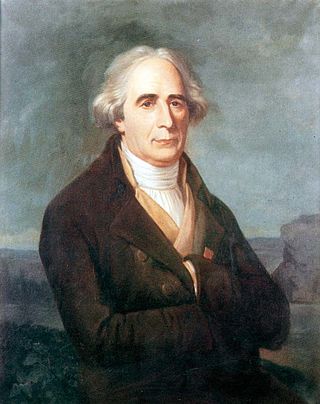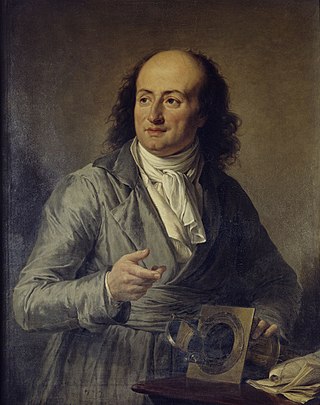
1783 (MDCCLXXXIII) was a common year starting on Wednesday of the Gregorian calendar and a common year starting on Sunday of the Julian calendar, the 1783rd year of the Common Era (CE) and Anno Domini (AD) designations, the 783rd year of the 2nd millennium, the 83rd year of the 18th century, and the 4th year of the 1780s decade. As of the start of 1783, the Gregorian calendar was 11 days ahead of the Julian calendar, which remained in localized use until 1923.

The Montgolfier brothers – Joseph-Michel Montgolfier and Jacques-Étienne Montgolfier – were aviation pioneers, balloonists and paper manufacturers from the commune Annonay in Ardèche, France. They invented the Montgolfière-style hot air balloon, globe aérostatique, which launched the first confirmed piloted ascent by humans in 1783, carrying Jacques-Étienne.

Jacques Alexandre César Charles was a French inventor, scientist, mathematician, and balloonist. Charles wrote almost nothing about mathematics, and most of what has been credited to him was due to mistaking him with another Jacques Charles, also a member of the Paris Academy of Sciences, entering on 12 May 1785.
The year 1782 in science and technology included many events, some of which are listed here.
The year 1825 science and technology involved some significant events, listed below.
The year 1833 in science and technology involved some significant events, listed below.
The year 1781 in science and technology involved some significant events.
The year 1811 in science and technology involved some significant events, listed below.
The year 1855 in science and technology involved some significant events, listed below.
The year 1857 in science and technology involved some significant events, listed below.
The year 1784 in science and technology involved some significant events.
The year 1739 in science and technology involved some significant events.
The year 1717 in science and technology involved few significant events.

Tokugawa Ieharu (徳川家治) was the tenth shōgun of the Tokugawa shogunate of Japan, who held office from 1760 to 1786.

Laki or Lakagígar is a volcanic fissure in the western part of Vatnajökull National Park, Iceland, not far from the volcanic fissure of Eldgjá and the small village of Kirkjubæjarklaustur. The fissure is properly referred to as Lakagígar, while Laki is a mountain that the fissure bisects. Lakagígar is part of a volcanic system centered on the volcano Grímsvötn and including the volcano Þórðarhyrna. It lies between the glaciers of Mýrdalsjökull and Vatnajökull, in an area of fissures that run in a southwest to northeast direction.

Jean-François Pilâtre de Rozier was a French chemistry and physics teacher, and one of the first pioneers of aviation. He made the first manned free balloon flight with François Laurent d'Arlandes on 21 November 1783, in a Montgolfier balloon. He later died when his balloon crashed near Wimereux in the Pas-de-Calais during an attempt to fly across the English Channel. He and his companion Pierre Romain thus became the first known fatalities in an air crash.

Tenmei (天明) is a Japanese era name for the years between the An'ei Era and before the Kansei Era, from April 1781 through January 1789. The reigning emperor was Kōkaku Tennō' (光格天皇).
Events from the year 1783 in Great Britain. This year is notable for the conclusion of the American Revolution.
Wilhelm Friedrich von Gleichen-Rußwurm (1717–1783), Stablemaster of the Margrave of Bayreuth, was a German biologist. In 1778 he developed a process of staining micro-organisms with indigo and carmine.

The Tenmei eruption was a large eruption of Mount Asama that occurred in 1783. This eruption was one of the causes of the Tenmei famine. It is estimated that about 1,500–1,624 people were killed in the eruption. The event is known in Japanese as The Burning of Asama in Tenmei.








